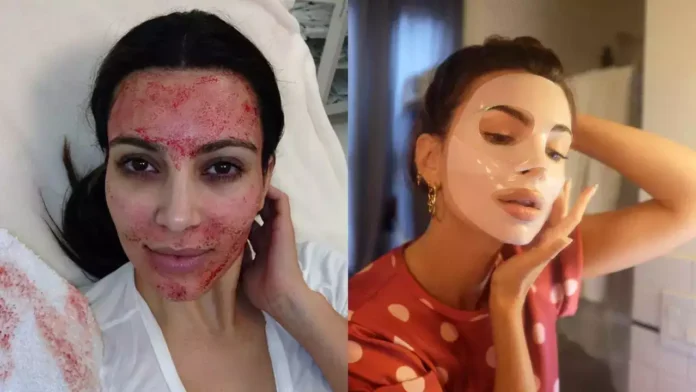The vampire facial, popularized by celebrity Kim Kardashian, has gained significant attention in recent years for its unique approach to skincare. This facial treatment involves drawing a small amount of the patient’s blood, typically from the arm, and then extracting the platelet-rich plasma (PRP) from the blood. The PRP is then applied to the face using microneedling or injection techniques.
Proponents of the vampire facial claim that the PRP contains growth factors and other beneficial components that stimulate collagen production, improve skin texture, and promote overall rejuvenation. Advocates also suggest that the treatment can help reduce the appearance of fine lines, wrinkles, acne scars, and other skin imperfections.
However, despite its popularity, the vampire facial has sparked controversy and raised questions about its safety and effectiveness. Some dermatologists and medical experts have expressed concerns about the lack of scientific evidence supporting the claims made about the treatment. They argue that while PRP may have some benefits for the skin, there is limited research to support its use in facial rejuvenation.
Additionally, there have been reports of adverse reactions and complications associated with the vampire facial, including redness, swelling, bruising, infection, and even scarring. Critics warn that improperly performed treatments or unsterile conditions could increase the risk of adverse outcomes.
Despite the controversy surrounding the vampire facial, its popularity continues to grow, fueled in part by celebrity endorsements and social media influence. Many skincare clinics and medical spas offer the treatment as part of their menu of services, catering to individuals seeking innovative solutions for youthful and radiant skin.
As with any cosmetic procedure, individuals considering the vampire facial should consult with a qualified and experienced healthcare professional to discuss their goals, expectations, and potential risks. It is essential to thoroughly research the provider and ensure that they follow strict safety protocols to minimize the risk of complications.
As the popularity of the vampire facial grows, so does the need for further research to better understand its effects on the skin and its long-term outcomes. Clinical studies evaluating the efficacy and safety of PRP-based treatments for facial rejuvenation are ongoing, but more robust evidence is needed to support its widespread use.
In addition to clinical research, regulatory agencies play a crucial role in ensuring the safety and quality of cosmetic procedures like the vampire facial. Health authorities provide guidelines and regulations to govern the practice of aesthetic medicine, including the use of PRP in facial treatments. Compliance with these regulations helps protect patients from potential harm and ensures that treatments are performed by qualified professionals in a safe environment.
Ultimately, the decision to undergo a vampire facial or any cosmetic procedure is a personal one that should be made after careful consideration of the potential benefits and risks. Individuals interested in the treatment should seek consultation with a board-certified dermatologist or cosmetic surgeon who can provide personalized recommendations based on their skin type, concerns, and medical history.

